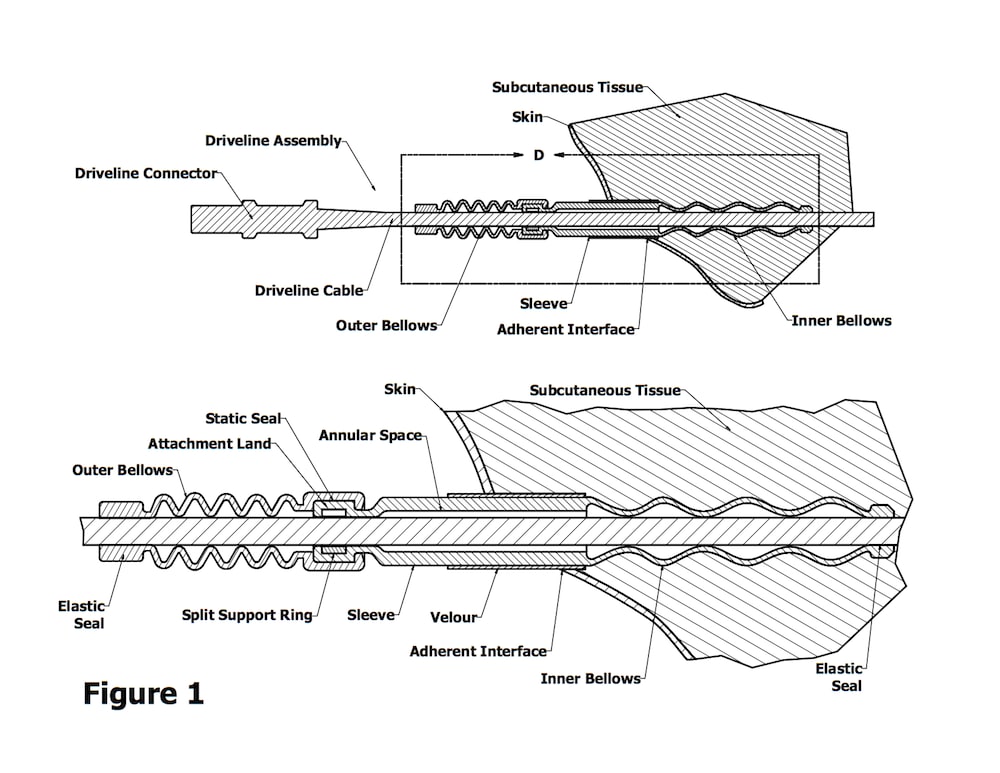Implanted VADs include an electrical power cable or driveline passing through the body tissue and exiting through the skin to connect with an external power supply. The driveline exit site in the skin is sealed by the natural tendency of living skin tissue to adhere to a compatible penetrating foreign object, and under favorable conditions forms an adherent interface that prevents dangerous bacterial invasion and penetration along the driveline. The problem is that the interface between the driveline and the skin is mechanically fragile. Routine patient activities as well as accidental events result in torsional, pull and bending loads on the driveline that apply stresses to the interface that often cause tissue injury and open a path for bacterial invasion. The proposed device is a strain relief mechanism that reduces stresses on the interface.
Figures 1 shows the conceptual design of the device deployed in a patient and Figure 2 is an exploded view. While the illustrations show a linear geometry, the sleeve and bellows are low modulus elastomers that bend easily and follow the curvature of the driveline cable. The device forms a short sliding sleeve surrounding the driveline cable positioned such that the skin contacts and adheres to the outer diameter of the sleeve. The sleeve may have a velour surface to promote tissue adhesion. Axially and torsionally flexible elastomer bellows and seals at the implanted and exposed ends of the sleeve allow the driveline cable to move axially or rotate independently of the sleeve to minimize forces on the sleeve and the adherent tissue, while isolating the annulus between the sleeve and the cable from body fluids and external contaminants. Each elastomer bellows includes a ring that grips the driveline cable and forms an elastically loaded seal that is a static seal in normal service, but may be slid manually to adjust the bellows position or slip under driveline force to relieve skin interface stress in an accidental event.
The sleeve and the two bellows are intended to last the life of the driveline, but the outside bellows only or the entire device may be replaced if necessary. It may also be retrofitted to existing drivelines since both parts are made of available implant-grade elastomers such as urethane or a urethane-silicone copolymer that have sufficient elasticity to be stretched and passed over the driveline connector. The outer bellows is stretched to engage an attachment land on the outer end of the sleeve, and forms a static seal with the land. A polymer split support ring is inserted in a groove inside the land to carry the inward radial force from the stretched bellows to assure a good seal and prevent unwanted contact and friction between the sleeve and the cable. The support ring is a semi-rigid polymer so that it can be spread to slip over the cable from the side for installation or removal.
Published patent application WO2016081343 includes more detail, and a US application is pending.
Like this entry?
-
About the Entrant
- Name:Kirby Meacham
- Type of entry:individual
- Software used for this entry:AutoDesk Inventor
- Patent status:pending





